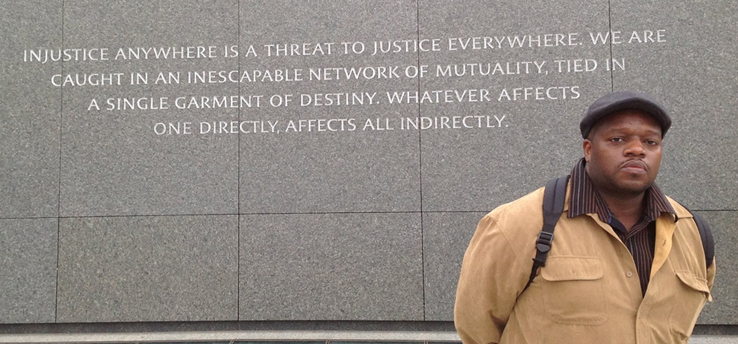by Jeff Mather
When I first became a member of Alternate ROOTS, I was a bit stunned by the stamina that ROOTers have for extended, deep dialogue on difficult issues. I did feel like some of these discussions and work group round tables were three-steps-forward-and-two-steps-back sorts of experiences. The time spent and the hard work not always getting us to clarity or satisfying outcomes. After a day of work group sessions when we were first launching C/APP in the 90s, I asked two friends and veteran members: “Do ROOTers always talk everything into the ground?” Their answer: “Yeah, pretty much.”
Yet, for a long time, the Resources for Social Change principle of Aesthetics eluded us. There it was in our workbook, and on our graphic chart of principles along with Transformation and Dialogue and Power Sharing and Partnership, but time after time we avoided talking about it. Were we ever going to tackle it? Maybe it could be assumed, because we are artists, that aesthetics were at play whenever we engaged communities. And out of deference to the wide range of our art forms, our cultural backgrounds, and the different communities we serve, we sidestepped the conversations about how and why Aesthetics is one of our principles of community engagement.
Then Omari Fox described an experience he and Frank Martin and some other people had at Azule in North Carolina almost a year ago, talking about Maya Lin and the Vietnam Memorial in D.C. Omari suggested that we offer a Learning Exchange in D.C. at the memorial and capture our dialogue in a documentary. As a sculptor and public artist myself, and as someone who has always made time, whenever I’m in D.C., to visit the Vietnam Wall, I responded to Omari’s idea enthusiastically. So the process of pulling this Learning Exchange together began with Omari and I as co-facilitators and Frank Martin invited to be our featured presenter. Omari had facilitated other Learning Exchanges before (and so had I) but this was the first one in ROOTS history that was co-facilitated by two visual artists and was centered on visual art. And by putting the word “Aesthetics” in the name, Omari was letting us all know that we would not be side stepping the topic, as we had successfully done before. I wouldn’t say we “talked Aesthetics it into the ground” just yet, but we certainly gave it a shot.
We don’t have the video documentation footage in an edited form yet, but for a glimpse into some of what “got us going,” here is an excerpt of a documentary on Maya Lin that we looked at during the Power and Aesthetics Learning Exchange:
Jeff Mather is a Georgia-based public artist, teaching artist & environmental sculptor. He has been a member of Alternate ROOTS since 1991 and has had his community-based public art projects funded by ROOTS’ Community/Artist Partnership Program three times. He is a facilitator with Alternate ROOTS’ Resources for Social Change. He is also a lead artist, co-founder, and board president for Atlanta Partnership for Arts in Learning and the lead artist for the Woodruff Art Center’s Digital Storytelling Program.

